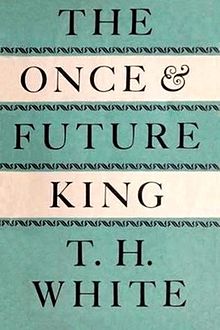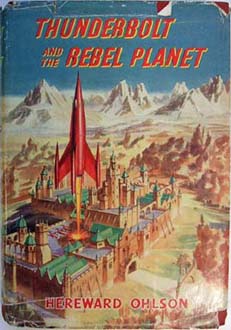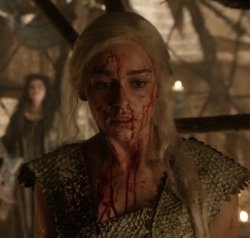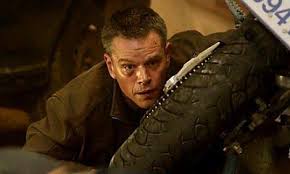The time has come round again to register ambivalence about the latest technically wonderful, and in many ways aesthetically stupendous, David Attenborough series, Planet Earth II. My criticism isn’t far removed from the fact that the title itself is in the style of a Hollywood Blockbuster franchise.
I voiced a similar concern back in 2013, referencing criticisms of a similar series about the anthropomorphism, and perhaps emotional manipulation, of the stories, and mentioning the riposte that anything that makes people more aware of the plight of wildlife in such a visually stunning way has to be a good thing. That’s true, of course, and one might add to that the fact that millions of people’s sense of awe and wonder, as well as their desire to preserve the wild environment, are heightened, which is to be applauded.
And yet, and yet… virtually every individual episode in the series is presented as an emotional drama both in the cutting, the music and, supremely, in Attenborough’s commentary, which now more than ever carries his personal authority as virtually a one-man World Heritage Site of wildlife documentary.
 In T H White’s The Once and Future King the future King Arthur is educated by Merlyn by changing him into various creatures: a perch, so that he can learn from the pike in the castle moat what it means to be a king; and a humble merlin in the royal mews so that he can learn the discipline (and the absurdity) of military heirarchy. The creatures are well observed, and highly anthropomorphised, yet the anthropomorphism is not only amusing but, in a novelistic sense, instructive to both Arthur and the reader. But there is a difference – T H White was not adding the imprimatur of factual “science” to his work, and wildlife documentaries do. Attenborough’s clout comes from his being a zoologist, not from his being a TV presenter.
In T H White’s The Once and Future King the future King Arthur is educated by Merlyn by changing him into various creatures: a perch, so that he can learn from the pike in the castle moat what it means to be a king; and a humble merlin in the royal mews so that he can learn the discipline (and the absurdity) of military heirarchy. The creatures are well observed, and highly anthropomorphised, yet the anthropomorphism is not only amusing but, in a novelistic sense, instructive to both Arthur and the reader. But there is a difference – T H White was not adding the imprimatur of factual “science” to his work, and wildlife documentaries do. Attenborough’s clout comes from his being a zoologist, not from his being a TV presenter.
One prosaic example to begin with. A segment on golden eagles hunting in the Alps describes their ability to spot prey two miles away and stoop at nearly 200mph to catch it. The footage from afar was supplemented by a glorious “eagle’s eye view” of the stoop, which as the “technical” exposé at the end showed, was achieved by a para-gliding daredevil scaring the pants off the cameraman doing his first tandem flight between jagged snowy peaks.
 Scientifically, though, it wasn’t an eagle’s eye view at all. Apart from the eagle’s tetrachromic vision and 270 degree field of vision, one can be pretty sure that once the massively innervated fovea detected the prey two miles away, the eagle’s attention would be directed on nothing else: its mind was probably entirely filled with the mouse (which we didn’t see at all) and not the scenery (at which we marvelled). A sprinter’s-eye-view of an Olympic final would include nothing but the finishing tape, not the cheering crowds. That’s nitpicking, of course, but reminds us that being an animal is nothing like imitating an animal.
Scientifically, though, it wasn’t an eagle’s eye view at all. Apart from the eagle’s tetrachromic vision and 270 degree field of vision, one can be pretty sure that once the massively innervated fovea detected the prey two miles away, the eagle’s attention would be directed on nothing else: its mind was probably entirely filled with the mouse (which we didn’t see at all) and not the scenery (at which we marvelled). A sprinter’s-eye-view of an Olympic final would include nothing but the finishing tape, not the cheering crowds. That’s nitpicking, of course, but reminds us that being an animal is nothing like imitating an animal.
A more complete narrative accompanied the sequence about the incredibly rare Himalayan snow-leopard, seldom observed and never before filmed so intimately. The tale was of a female with a not-quite-independent two year old female cub. The mother, however, begins to feel urges “she is unable to resist”, and starts to roar out mating calls and mark boundaries with pheromones. But we’re warned this is a worrying thing for her, because male snow leopards, like lions, tend to kill the offspring of rivals when they mate.
Sure enough the arrival of two males at once puts the female in a quandary, especially as she and her cub are trapped between the two rivals. What to do? The clever female cunningly rolls over submissively to each male in turn, enabling the youngster to slip away in the confusion. The smaller male, who arrived first and with whom single-mum was beginning to get on OK barring a slap or two, inevitably gets into a fight with the bigger newcomer, in which the female is also caught up, until eventually big-daddy drives little-boy away.
We’re told, then, that the male won’t let her leave without mating. The rape-scene is not shown, but we’re told that the female is injured, and the survival of the reunited family is in question. Eventually it all ends happily as mother and baby are spotted a few weeks later, separately, on motion-sensor cameras that show the young female has now got a job and left home.
Now the whole cast of this storyline is straight out of a human kitchen-sink drama, or maybe a gritty social documentary. Single-mum, worried about the safety of her baby, unwisely gets into a series of relationships with abusive men, and suffers rape from the most violent, but manages to escape to a refuge, preserve her child and survive independently. Snow leopards are sisters too!
But so much of that is actually editorial gloss. The facts are rather simpler: female snow leopard comes on heat, and succeeds in mating according to the usual customs of her kind. The “irresistible” urge she felt was only irresistible in the sense that Calvinistic grace is irresistible: that is, it was entirely consonant with her own desires. A female leopard in oestrus wants to mate – the idea that there is some resistance against it, or that fears for her cub’s safety come into play as a counterbalance, are not only imaginary but more or less implausible.
On film, the ploy of buttering up the two males by submissive displays to divert them from the baby looks persuasive. But on reflection, the fact that she does the same to the successful male before mating, after the cub is safely out of the way, rather suggests that the real message of the submissive behaviour was simply, “I’m available, guys, but you’ll have to fight for me.” She is, after all, instinctively interested in producing the strongest cub she can, according to prevailing science.
And of course, wording the commentary in terms of her not being allowed to leave before mating leads us to forget that mating was the entire reason she was there in the first place. What was represented as a picture of nature as not only red in tooth and claw, but abusive of females, was actually, if one thinks about it, the snow-leopard equivalent of a church wedding. I would suggest that even had the male killed the cub, as leopards see it it would have been as routine as cutting the cake. Surely the real purpose of a science documentary should be to get us to look at the world through the leopard’s eyes, rather than at leopards through ours.
I much prefer the more prosaic, less adventurous, accounts in a radio programme like the BBC’s Living World, in which naturalists who have often been observing a single species for an entire career get to speak about the subtle insights they’ve gained by such prolonged exposure. Such scientists notice things a parachuted-in film-crew doesn’t: “That’s funny – I’ve just realised they always do that before they mate? Why would that be?” And in that manner they, and the listener, begin to penetrate the exotic world of the magpie or the water-beetle.
The first episode of Planet Earth II had as its dramatic climax an extended scary scene of hatching marine iguanas being hunted down by an army of particularly slip-slidy racer snakes on the Galapagos Islands. it was dramatic enough to be in the newspapers next day, and even David Klinghoffer on ID’s Evolution News and Views bought into the plot, praising the plucky iguanas.
This clip doesn’t include the beginning of the sequence and its commentary, which was set up as the first innocent iguana hatchling sensing danger (probably through hearing the scary music) but, like so many of these documentary beasts, being driven by an irresistible instinct to seek the rocky shore and the sea. Once more, the “out-take” footage shows that pre-production, the film just showed a lot of iguanas hatching and running to the rocks, with a lot of opportunist (and individualistic) snakes cashing in on the event and intercepting some. But it was cut to look like a psychological thriller – the fugitive against the mob. Indeed, an article in the Independent endorses the Hollywood motif. The reporter describes how the scene plays out:
It saw iguana after iguana chased down and asphyxiated by wily racer snakes as they attempted to make their way to the sea, leaving just one left to poke its eyes above ground and survey the devastation like a shellshocked soldier.
 Folks, it’s the centenary of the Battle of the Somme – my own grandfather took a couple of bullets when he went over the top in the West Kent Regiment, but survived to be that traumatized iguana (I guess). But do lizards really have persistent nightmares of snakes for the rest of their lives, as Granddad did of Germans? Do iguanas have the brain to anticipate any danger, let alone be shellshocked afterwards? I confess that the scene took me back to a tacky sci-fi novel of my childhood, in which giant snakes took over a planet. The Somme analogy is probably more apt, but actually, the scene probably wasn’t produced as a re-run of the Western Front:
Folks, it’s the centenary of the Battle of the Somme – my own grandfather took a couple of bullets when he went over the top in the West Kent Regiment, but survived to be that traumatized iguana (I guess). But do lizards really have persistent nightmares of snakes for the rest of their lives, as Granddad did of Germans? Do iguanas have the brain to anticipate any danger, let alone be shellshocked afterwards? I confess that the scene took me back to a tacky sci-fi novel of my childhood, in which giant snakes took over a planet. The Somme analogy is probably more apt, but actually, the scene probably wasn’t produced as a re-run of the Western Front:
I asked Matthew Meech, who edited episode one, if he took any cues from cinema for the scene.
“I’m a bit of a movie fanatic so I kind of pick things up from all over the place – big Hitchcock fan, Christopher Nolan, Scorsese Spielberg etc,” he said.
“But cutting wildlife films are [sic] like cutting silent movies, it’s all about action/reaction. Also timing, be it for comedy or thrills. The narration can provide some of this, but you don’t want to make the pictures just wallpaper for the commentary. The shots need to speak for themselves.
“I really like to find a genre that fits with a sequence if I can, as it’s a subliminal way to ease people into a new story. On Africa (another Attenborough BBC documentary) I cut a sequence with fighting giraffes in the style of a Western, in The Hunt we did a wild dog hunt like a car chase in a Bourne film.”
Of this latest jaw-dropping scene, Meech explained: “With the iguanas and snakes sequence we really wanted to set up the feeling that something wasn’t quite right when the first iguana pops out, so as to make the first wide shot, when the snakes start creeping up on him, really stand out.
The article doesn’t actually divulge which film did inspire this sequence, but the common feature of the examples above is this: they are not only human stories, and not animal stories, but they are fictional human stories. If you want to study how humans characteristically live their lives, I venture to suggest that The Bourne Identity won’t get you very much further than Thunderbolt and the Rebel Planet. It tells you even less about the world animals experience.
Does it matter, if it’s good entertainment, makes us aware of the natural world, and so on? Well, it doesn’t work for my wife, who won’t watch it – though interestingly she’d be quite content to watch footage of leopards or ibexes doing their normal thing amidst beautiful natural scenery for hours, knowing that any excitement or upset would be “what happened next,” rather than what the cameraman was banking on to draw in the ratings.
It seems to me that perpetuating the image of the natural world as a malevolent and lawless place where animals live in constant fear about their cubs setting off avalanches (grizzly bears), their mates abusing them (snow leopards), and bloody death being only the next drink away (Sinai ibexes) is a bad thing. It would be truer to science to recognise how these creatures all follow their own kind’s “law”, a law to which they are by nature suited, and which they probably even enjoy, in blithe disregard of the snow ridge above them, the high spirits of their mate, the occasional fox in the valley or even the drone overhead poking its nose into their affairs.
And of course, it’s also perpetuating a theological view of a natural world that, far from being “very good” appears to be just one long train of “natural evil”, courtesy of the human producer’s love of the dramas of fallen humanity.
 It’s possible, I suspect, that this “Game of Thrones” view of nature might even do actual harm, in a world in which our own evolved animality is stressed and our human exceptionalism downplayed. True, Planet Earth II has the now obligatory downbeat themes of human exploitation and destruction of the environment, which may well prompt a moral response – though it’s a pity the ivory-poachers and illegal loggers will be the last to watch it.
It’s possible, I suspect, that this “Game of Thrones” view of nature might even do actual harm, in a world in which our own evolved animality is stressed and our human exceptionalism downplayed. True, Planet Earth II has the now obligatory downbeat themes of human exploitation and destruction of the environment, which may well prompt a moral response – though it’s a pity the ivory-poachers and illegal loggers will be the last to watch it.  On the other hand, there are those to whom the bloody struggle for existence is, itself, a powerful incentive to – well, struggle bloodily. If it’s a Malthusian struggle between my way of life and some bloody penguin’s, then (they might say) me and mine come first.
On the other hand, there are those to whom the bloody struggle for existence is, itself, a powerful incentive to – well, struggle bloodily. If it’s a Malthusian struggle between my way of life and some bloody penguin’s, then (they might say) me and mine come first.
Likewise, I suppose that if some beleaguered single mother in an abusive relationship were encouraged to think that a snow leopard in the Himalayas had the same problem and broke free from it, then she might benefit even from the fiction. But remember it’s equally possible that her abusive boyfriend will be watching the same TV and buy into the same anthropomorphism – only he may identify with the big male cat, who gave the whining female what was coming to her, but missed out on doing a proper job on the brat.
“It’s natcheral, innit?”


I loved and greatly respected his series on birds. i thought it was fantastic and he has a good idea abot presentation. he speaks not in paragraphs but almost in a short story.
Other stuff by him i found not impressive or very good.
he pushes evolutionism of coarse.
I think his brother was on Jurassic park.
Yeah – as I indicated in the previous critical post, I owe a great deal to David A, having been fascinated by his UK TV stuff back in the 1950s, and his books were one of the reasons I decided to study zoology in the 60s (though I ended up as a medic rather than a naturalist for some reason).
Less evolution-speak in this series: my criticism in previous series is that he treats evolution in a shamelessly teleological, and misleading way – fish have a problem to solve to live on land, so they develop legs, and so on.
When he describes things, rather than creating a human narrative, he’s excellent – but I guess the series largely sell to the public on the basis of their “human (ie animal) interest” angle.
As a film lover, and someone who tried his hand briefly at making them before realizing I didn’t have the creative stamina (nor the funding!), I have very mixed feelings about stuff like this. On the one hand, I appreciate the effort and talent that goes into editing something without a narrative into something with one, but on the other, I agree wholeheartedly with all of the bones you pick here.
It goes to show you how reinforcing our culture is–certain people have the keys to the media kingdom, which of course means their predispositions are utterly apparent in their filmmaking. That’s fine when it’s Martin Scorsese showing us the darkest depths of humanity or Quentin Tarantino doing whatever Quentin Tarantino does.
But when it’s coming through in documentary filmmaking, there’s a problem because most laypeople (who aren’t at all familiar with the process of documentary filmmaking or the fact that they don’t come out of institutions but out of actual humans with agendas and biases) think that documentaries are purely fact-based. If they’re getting their information on the natural world from docs like these, then they’re going to trust the people behind the production as representing the world in a true sense. One needs only to look at the recent swath of GMO docs to come out over here (or anything Michael Moore has ever done) to understand how much documentaries are treated as unbiased fact-based enterprises.
The only documentary filmmaker I’ve come to have much respect for is Werner Herzog because he’s pretty open about fabricating stuff to suit what he’s trying to convey. His recent documentary on volcanoes is phenomenal (as is his classic Grizzly Man).
And, since we’re talking about movies, I have to recommend you check out “Arrival”, it’s the annual prestigious sci-fi that we always get but it’s fantastic and a really interesting look at time, language, and determinism. It’s directed by one of my favorite filmmakers right now, and I can’t recommend it enough (and I think it’s vaguely relevant to the issues of the blog!)
Thanks Noah.
I suppose the bottom line is that the world isn’t, in itself, a story until a human being makes it one. Of course, God has his own story to tell, but he’s not making the nature documentaries, so maybe my wife’s rather Goethian idea of just watching nature happen, even if nothing apparently does, may have some merit in reading the true narrative.
My brother went to see Arrival at a late evening viewing, and found himself the only one in the cinema – apart from the staff, who had to eat the popcorn themselves, I suppose! I’m not even sure where our nearest theatre is out here in the wilds, so I’ll have to rely on one of the kids giving us the DVD!
Ah, I see! It’s definitely worth getting on DVD when it comes out, at any rate.
I saw an article in the New York Times this morning on “The Secret to Love” that said, I kid you not, “Science says lasting relationships come down to–you guessed it–kindness and generosity”.
I had to do a double take, because I thought it might’ve been satire. It’s almost comically self-unaware to see science (or probably the media, in this case) announce triumphantly that they’ve finally understood the key to human relationships–as if we needed them to confirm something we’ve known for as long as we’ve been a conscious species. I’m just in utter disbelief that the Times can present the article like science alone has discovered something so obviously apparent in human relationships.
I can’t help thinking there may be some culture-bound assumptions in that study, Noah. I would have thought it would make for a lifelong relationship if the king tells you that if you do not obey him you’ll be hung, drawn and quartered.
But maybe they have in mind a kind and generous relationship – in which case they’ve rather begged the question!